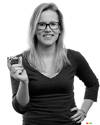As the car industry evolves, so too does the technology housed in every vehicle. From Bluetooth to keyless entry, what used to be “ahead of the game” and novel is just standard fare nowadays. And as cars get ever more technical, manufacturers are having to ('scuse the pun) reinvent the wheel.
Well, Subaru has accepted the challenge and released a brand new safety system they call EyeSight. Like Volvo's City Safety, the driver assistant program is designed to help the person behind the wheel be better, not take over completely. I was given the opportunity to discover the new system, one that's been tested on our Canadian roads since 2009 and available on Japanese Subaru since 2010. Generally I'm not a fan of “nanny” systems, but I was rather impressed with EyeSight.
First off, EyeSight sets itself apart from the pack by using cameras instead of lasers and infrared. Unlike most vehicles with front-crashing warning systems housed in the bumper or front grille of the car, EyeSight relies on two cameras mounted inside the car, just above the rearview mirror behind the windshield (which means only specially designed Subaru windshields can be installed on vehicles with EyeSight should a replacement be needed).
These cameras “see” what's before them and can actually recognize objects: cars, trucks, buses and pedestrians. They piece together data to form a picture and determine what's close to your vehicle and what's not.
While not unlike laser/infrared systems, EyeSight has one major advantage: it sees and identifies objects and knows how to react accordingly. But, how does this help the driver?
While EyeSight is not designed to prevent accidents, it is there to reduce the risk and even to lessen the damage caused by an accident to both the vehicle and the occupants. It does so through a series of pre-collision braking, pre-collision throttle reduction and a warning system for collisions, lane-departure and sway (read: tired driving) to alert the driver.
Again, EyeSight is not revolutionary, but the system is well-executed.
Unless you choose to turn the system off (which you can do), it will always be on and applicable as soon as you hit 32 km/h. Once the system has been activated (pre-collision braking applied, for example), it will take the system 7 seconds to reset and work again. The system also “learns” how you drive. So, if you're a line-hugger, it will (eventually) stop beeping all the time because you're near a line.
I was given the chance to see just how well EyeSight works in a possible rear-end collision situation. Bringing the brand new 2013 Subaru Outback 3.6R Limited up to 30 km/h, then taking my foot off the throttle and moving my left foot well away from the brake, I careened towards a barrier set up for the test. Keeping my foot off the brake was near impossible and it took me two tries to let the system work as I kept slamming on the brakes myself (I am not one to trust technology...).
Once I finally gave in and let EyeSight do its job, the performance was stellar. The car came to a complete stop a few feet from the barricade and held the car in that position. If I had been in a real near-collision situation, and dazed and confused (more so than usual) tried to exit the vehicle after a near crash, as soon as EyeSight detected the seat belt off and the door opened, the electronic parking brake would be applied so the car won't move forward once the driver has left.
Another nifty feature of EyeSight -- one I think drivers will benefit most from -- is the throttle reduction when an obstacle is detected.
We've all done it: You're a stop sign with a car ahead of you. He's preparing to leave, so you start checking your blind spots. Head turned to the left you assume the car in front has left. But he hasn't. He's still sitting there, but you're already pressing the throttle, ready to leave. Hello new bumper.
Well, EyeSight can save you the garage bills and whiplash. If it detects something in front of your car, it will greatly reduce the throttle output. So, even if you stomp the gas pedal, the car will only creep forward and the system will beep to let you know there's something in front of you. Quite clever if you ask me.
EyeSight also allows you to engage an adaptive cruise control. Like a laser-guided system, EyeSight will attach itself to the car ahead and keep you locked on. And you can, of course, adjust the distance between you and the car ahead. The system will reduce your speed and/or apply the brakes to keep you at that distance. In stop-and-go traffic, EyeSight will keep you rolling and stopping without you having to do much except for steer. However, if traffic stops longer than 3 seconds, the system will not move you forward until you touch the throttle or press “resume” on the cruise control buttons.
Speaking of leaving a stop, another benefit of the EyeSight system I think driver will use often (and your fellow motorists will appreciate you having) is the “time to go” alert. When the system detects the car ahead has moved more than 3 feet away (and you haven't yet pressed the throttle), it will beep at you to get you moving. No more holding up cars at a green light as you fiddle with your iPhone.
Of course, the system is not without its limitations. From poor visibility (bad weather, dirty windshield), to unknown objects, EyeSight is not perfect. And that's why Subaru has branded it as a driver assistant. It is not there to do the driving for you, this is important to remember.
In all, Subaru's EyeSight system is not a game-changer. It's not something we've never seen before, nor is it something we won't see again. However, it's designed in such a way that it is unique.
At the moment, Subaru will offer EyeSight on two models; the 2013 Subaru Legacy and Outback 3.6R Limited models, which means that despite the system only being a $1,500 add-on, you still have to dish out the initial cost for a top-of-the-line Subaru. Eventually, the technology will trickle down to every model in the lineup.
Well, Subaru has accepted the challenge and released a brand new safety system they call EyeSight. Like Volvo's City Safety, the driver assistant program is designed to help the person behind the wheel be better, not take over completely. I was given the opportunity to discover the new system, one that's been tested on our Canadian roads since 2009 and available on Japanese Subaru since 2010. Generally I'm not a fan of “nanny” systems, but I was rather impressed with EyeSight.
First off, EyeSight sets itself apart from the pack by using cameras instead of lasers and infrared. Unlike most vehicles with front-crashing warning systems housed in the bumper or front grille of the car, EyeSight relies on two cameras mounted inside the car, just above the rearview mirror behind the windshield (which means only specially designed Subaru windshields can be installed on vehicles with EyeSight should a replacement be needed).
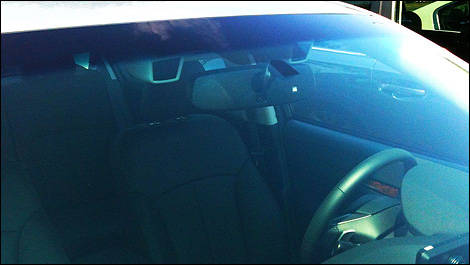 |
| Photo: Miranda Lightstone |
These cameras “see” what's before them and can actually recognize objects: cars, trucks, buses and pedestrians. They piece together data to form a picture and determine what's close to your vehicle and what's not.
While not unlike laser/infrared systems, EyeSight has one major advantage: it sees and identifies objects and knows how to react accordingly. But, how does this help the driver?
While EyeSight is not designed to prevent accidents, it is there to reduce the risk and even to lessen the damage caused by an accident to both the vehicle and the occupants. It does so through a series of pre-collision braking, pre-collision throttle reduction and a warning system for collisions, lane-departure and sway (read: tired driving) to alert the driver.
Again, EyeSight is not revolutionary, but the system is well-executed.
Unless you choose to turn the system off (which you can do), it will always be on and applicable as soon as you hit 32 km/h. Once the system has been activated (pre-collision braking applied, for example), it will take the system 7 seconds to reset and work again. The system also “learns” how you drive. So, if you're a line-hugger, it will (eventually) stop beeping all the time because you're near a line.
I was given the chance to see just how well EyeSight works in a possible rear-end collision situation. Bringing the brand new 2013 Subaru Outback 3.6R Limited up to 30 km/h, then taking my foot off the throttle and moving my left foot well away from the brake, I careened towards a barrier set up for the test. Keeping my foot off the brake was near impossible and it took me two tries to let the system work as I kept slamming on the brakes myself (I am not one to trust technology...).
Once I finally gave in and let EyeSight do its job, the performance was stellar. The car came to a complete stop a few feet from the barricade and held the car in that position. If I had been in a real near-collision situation, and dazed and confused (more so than usual) tried to exit the vehicle after a near crash, as soon as EyeSight detected the seat belt off and the door opened, the electronic parking brake would be applied so the car won't move forward once the driver has left.
 |
| Photo: Miranda Lightstone |
Another nifty feature of EyeSight -- one I think drivers will benefit most from -- is the throttle reduction when an obstacle is detected.
We've all done it: You're a stop sign with a car ahead of you. He's preparing to leave, so you start checking your blind spots. Head turned to the left you assume the car in front has left. But he hasn't. He's still sitting there, but you're already pressing the throttle, ready to leave. Hello new bumper.
Well, EyeSight can save you the garage bills and whiplash. If it detects something in front of your car, it will greatly reduce the throttle output. So, even if you stomp the gas pedal, the car will only creep forward and the system will beep to let you know there's something in front of you. Quite clever if you ask me.
EyeSight also allows you to engage an adaptive cruise control. Like a laser-guided system, EyeSight will attach itself to the car ahead and keep you locked on. And you can, of course, adjust the distance between you and the car ahead. The system will reduce your speed and/or apply the brakes to keep you at that distance. In stop-and-go traffic, EyeSight will keep you rolling and stopping without you having to do much except for steer. However, if traffic stops longer than 3 seconds, the system will not move you forward until you touch the throttle or press “resume” on the cruise control buttons.
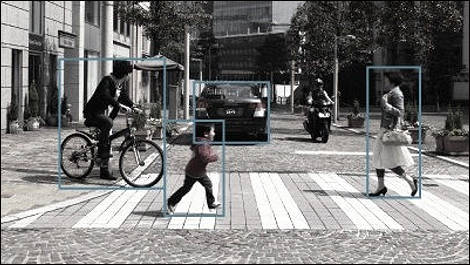 |
| Photo: Subaru |
Speaking of leaving a stop, another benefit of the EyeSight system I think driver will use often (and your fellow motorists will appreciate you having) is the “time to go” alert. When the system detects the car ahead has moved more than 3 feet away (and you haven't yet pressed the throttle), it will beep at you to get you moving. No more holding up cars at a green light as you fiddle with your iPhone.
Of course, the system is not without its limitations. From poor visibility (bad weather, dirty windshield), to unknown objects, EyeSight is not perfect. And that's why Subaru has branded it as a driver assistant. It is not there to do the driving for you, this is important to remember.
In all, Subaru's EyeSight system is not a game-changer. It's not something we've never seen before, nor is it something we won't see again. However, it's designed in such a way that it is unique.
At the moment, Subaru will offer EyeSight on two models; the 2013 Subaru Legacy and Outback 3.6R Limited models, which means that despite the system only being a $1,500 add-on, you still have to dish out the initial cost for a top-of-the-line Subaru. Eventually, the technology will trickle down to every model in the lineup.
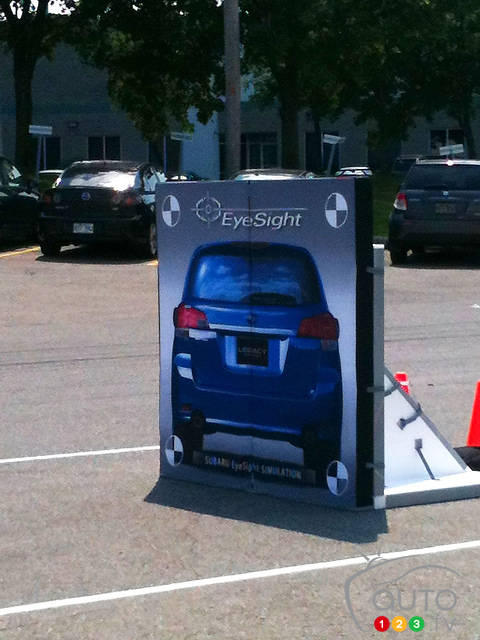
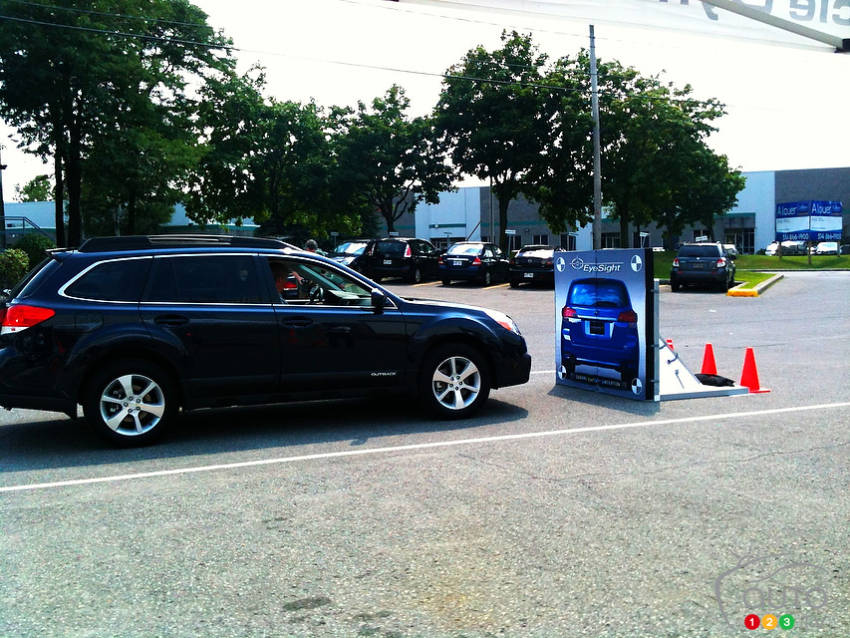
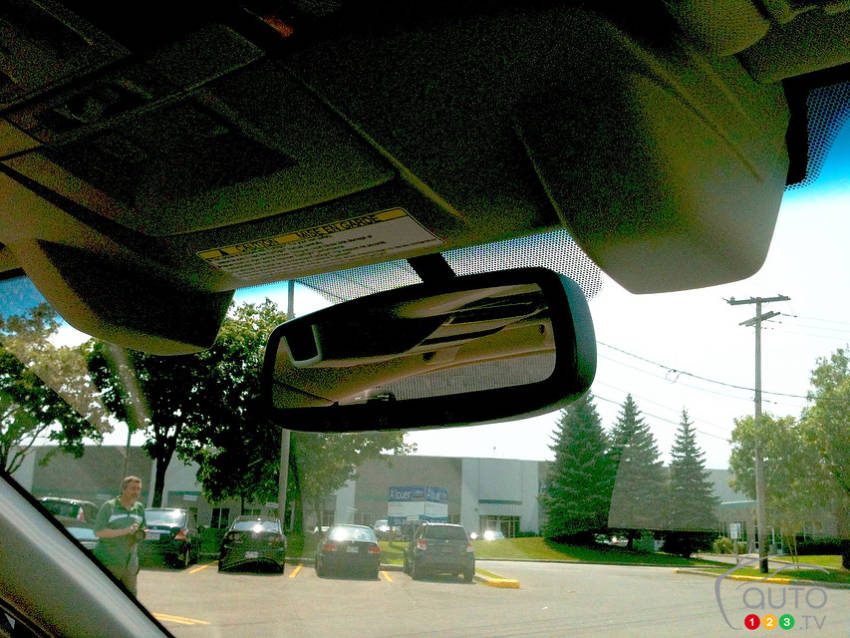
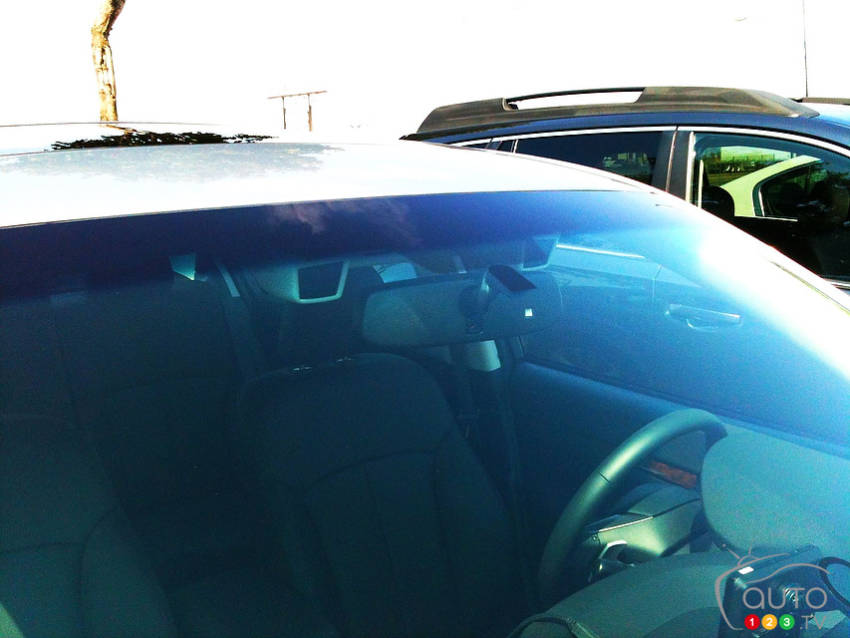
Article Gallery


